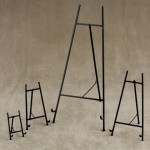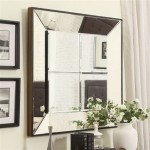How to Mirror Your iPhone to Your TV Without Apple TV
Mirroring an iPhone's screen to a television offers a convenient way to share photos, videos, and presentations on a larger display. While Apple TV provides a seamless mirroring experience, several alternative methods exist for users who do not own this device. This article outlines various techniques to achieve screen mirroring from an iPhone to a TV without using Apple TV.
Utilizing Screen Mirroring Apps
Several third-party applications facilitate screen mirroring from an iPhone to smart TVs. These apps often require both the television and the iPhone to be connected to the same Wi-Fi network. Popular options include apps like Reflector, AirServer, and ApowerMirror. These applications typically function as receivers on the TV, allowing the iPhone to connect and mirror its display.
To utilize these apps, users typically download the application on their smart TV or a connected streaming device. Then, they open the mirroring functionality on their iPhone's Control Center. The TV or streaming device should appear as an available mirroring target. Selecting the target initiates the mirroring process.
Connecting with Streaming Devices
Various streaming devices, such as Roku, Chromecast, and Amazon Fire TV Stick, provide screen mirroring capabilities. These devices connect to the TV's HDMI port and offer a range of streaming services in addition to screen mirroring functionality.
For devices like Roku, users need to enable screen mirroring in the device's settings. On the iPhone, users access the Control Center and select Screen Mirroring. The Roku device should appear as a mirroring target. Chromecast and Fire TV Stick offer similar functionalities, typically requiring the installation of a companion app on the iPhone.
Leveraging DLNA-Compatible Devices
DLNA (Digital Living Network Alliance) certified devices, like some smart TVs and game consoles, can receive media content streamed from an iPhone. While not true screen mirroring, this method allows users to share photos, videos, and music on their TV. DLNA utilizes a shared network connection to transmit media files.
Users can employ DLNA-compatible apps available on the App Store to stream media to their TV. These apps typically detect DLNA devices on the network and allow users to select the target device for streaming.
Connecting via HDMI Adapter and Cable
A direct wired connection offers a reliable, low-latency mirroring solution. This method requires a Lightning Digital AV Adapter and an HDMI cable. The adapter connects to the iPhone's Lightning port, while the HDMI cable connects the adapter to the TV's HDMI port.
Once connected, the TV should automatically switch to the input corresponding to the HDMI port. The iPhone's screen will then be mirrored on the television. This wired connection avoids potential network latency issues and provides a stable mirroring experience.
Mirroring to Windows PCs
Several third-party applications allow mirroring an iPhone's screen to a Windows PC. This can be a useful alternative if a suitable TV connection isn't readily available. Applications such as LonelyScreen and 5KPlayer offer this functionality.
These applications create a receiver on the PC, allowing the iPhone to connect and mirror its display via AirPlay. The iPhone and the PC must be on the same Wi-Fi network for this method to function.
Considerations for Screen Mirroring
Network stability plays a crucial role in wireless mirroring methods. A strong and stable Wi-Fi connection is essential for a smooth mirroring experience. Weak signals can lead to lag, dropped frames, and connection interruptions.
Different methods offer varying levels of latency. Wired connections generally provide the lowest latency, followed by streaming devices, and finally, screen mirroring apps. Latency refers to the delay between an action on the iPhone and its reflection on the TV screen.
Functionality may vary depending on the specific apps and devices used. Consulting the documentation for the chosen method can provide specific instructions and troubleshooting tips.
Choosing the appropriate mirroring method depends on individual needs and available equipment. Wired connections offer stability and low latency, while wireless methods provide greater convenience. Considering factors such as network stability, latency requirements, and available devices will help users select the optimal solution for their mirroring needs.

3 Ways To Mirror Iphone Tv Without Apple Istreamer

How To Mirror Iphone Tv Without Apple 3 Methods 2024

How To Mirror Iphone Tv Without Apple Airdroid

3 Ways To Screen Mirror Iphone Any Tv No Apple Required 2024

Simple Ways To Mirror Iphone Tv Without Wifi 6 Steps

How Can You Mirror Your Iphone To Tv Without Apple Teckers

3 Ways To Mirror Iphone Tv Without Apple Istreamer

2024 Tutorial How To Mirror Iphone Tv Without Apple

How To Mirror Iphone Tv Without Apple Airdroid

How To Mirror Iphone A Apple Tv Without Techfans Net








